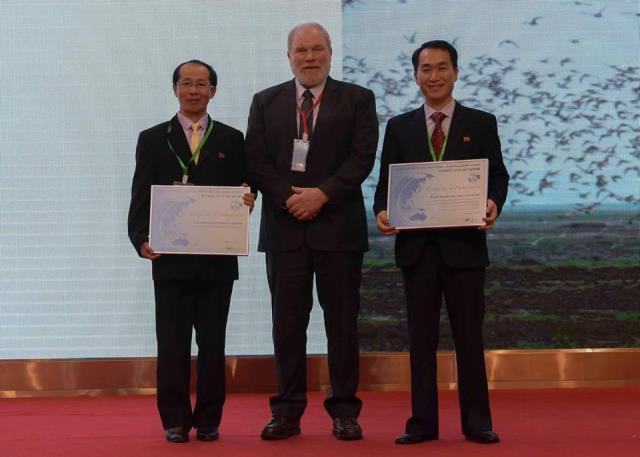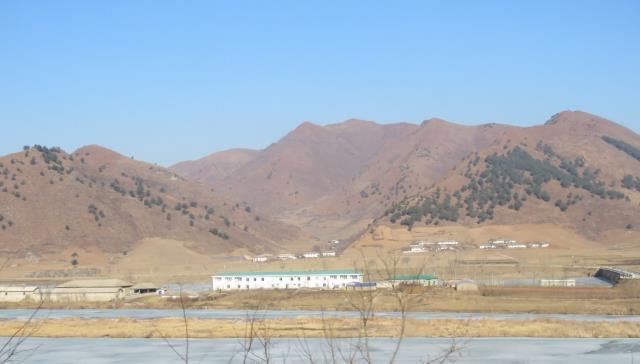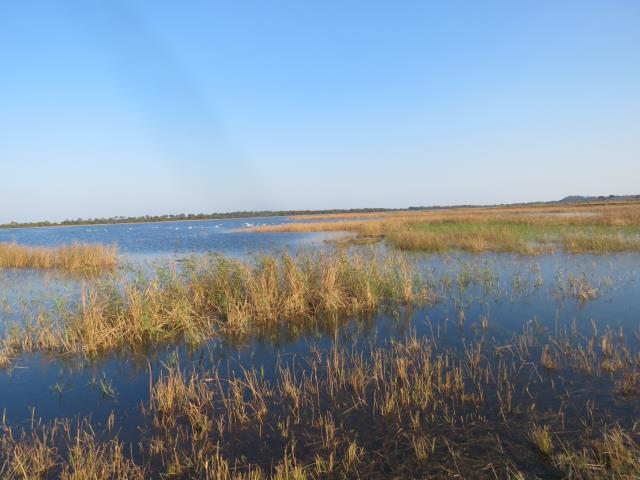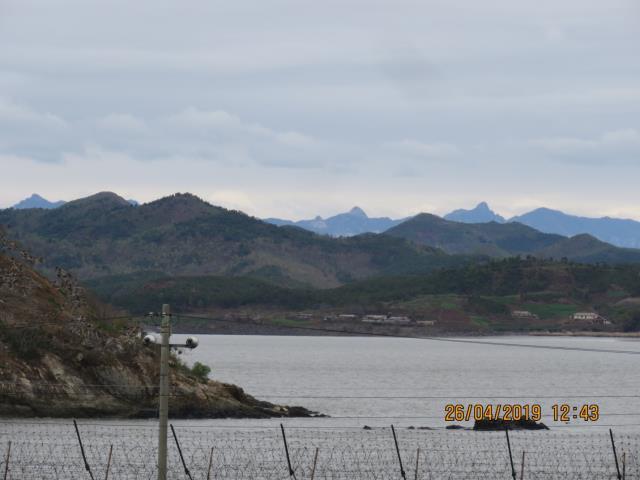
최근에 들어서야 북한은 습지, 산림보호와 같은 환경보호에 관심을 가지 시작했으며, 조림사업을 시작했다. 한스자이델재단 한국사무소는 2014년부터 환경조사에 참여해 라선 지역을 시작으로 2015년 북한의 국토환경보호성과 긴밀한 협력을 통해 습지 보고 사업을 함께 진행하고 있다.
북한은 2018년 아시아태평양지역의 18개국이 알래스카, 뉴질랜드, 한국을 가로지르는 철새를 보호하기 위해 참여하고 있는 `동아시아-대양주 철새이동경로 파트너십`을 체결했다. 또한 2018년 북한은 1971년 습지 보호를 위해 체결된 국제 협약인 람사르 습지 협약의 170번째 회원국이 됐다.
이러한 국제 협력을 통해 얻을 수 있는 것은 무엇일까? 북한의 경우 정상국가로 인정받을 수 있는 기회가 생긴다. 국제사회에서는 환경 보호를 굉장히 중요한 문제로 다루고 있다. 철새의 경우 철새 이동 경로에 포함되는 국가 중 하나의 국가라도 철새 보호에 별다른 관심을 가지지 않으면 경유지, 휴식지, 겨울에 먹이를 찾을 수 있는 지역이 줄어들게 된다. 다른 국가들이 철새를 보호하는데 노력을 기울인다 하더라도, 철새들의 생존율은 떨어진다. 현재 한국과 중국 갯벌의 75%가 간척 사업으로 인해 사라진 상황에서 황해 지역은 아시아 태평양지역에서 철새들에게 굉장히 중요한 지역이다. 특히 북한 문덕 지역은 기러기류 `개리` 전세계 개체의 40%가 중간 휴식지로 머무는 곳 이다.
또 북한은 환경분야 국제협력을 통해 북한이 정상적이고, 평화적인 관계를 구축할 수 있음을 보여주고 있다. 이는 국제사회가 북한을 협력의 파트너로 인정하고, 조사 발표 등의 활동을 통해 다른 협력 파트너들과 같은 책임감을 가질 수 있도록 한다. 국제사회에서 소외되어 있는 현재 북한의 상황에서, 국제협력을 통해 북한이 다시 국제사회에 통합될 수 있도록 하는 것이다.
이에 한국은 북한과의 협력을 통해 동등한 이익을 볼 수 있다. 제재로 인해 경제적인 협력이 불가능한 상황에서, 다른 분야의 협력을 통해 더욱 견고하고 평화적인 관계를 구축할 수 있다. 또한 한강 하구, 백령도 주변의 섬들 DMZ부근의 환경적 가치에 대해 집중한다면, 국경선 부근의 군사적 긴장을 완화시킬 수 있다.
산림협력의 분야의 경우 습지 보호, 주요 서식지 보호를 통해 인적교류 증대, 신뢰구축의 효과를 기대할 수 있다. 이는 한반도의 평화에 큰 기여를 할 수 있을 것이다. 그러므로 한국은 지금처럼 환경 분야 협력을 소홀히 해서는 안될 것이다. 환경 보호 방안, 공동 환경 조사 진행, 공동 연구 출판물 발행 등의 활동을 진행하면서 인도적 지원도 이뤄질 수 있다. 장기적인 관점에서 북한의 자연환경보존과 생태다양성보호는 한국 뿐만아니라, 전 지구적 측면에서도 이익이 된다.
철새들이 DMZ의 철조망을 가로질러 날아갈 때, 사람들과 달리 철새들은 국경선이 무엇인지 모른다. 훗날 남한사람과 북한사람이 철새처럼 자유롭게 남북을 오갈 수 있는 날이 오길 바라본다. 새와 자연을 통한 북한과의 지속적인 협력이 이를 가능하게 해주리라 믿는다.
베른하르트 젤리거(Bernhard Seliger) 박사(한스자이델재단 한국사무소 대표)
*번역은 한스자이델 재단에서 진행했으며 일부 한글 번역 문장은 맥락이 훼손되지 않은 범위내에서 편집했음. 다음은 영문 원본.
Dr. Bernhard Seliger(Hanns-Seidel-Foundation Korea)
The status of North Korea`s Environment and the case for inter-Korean and international cooperation Korea
Thinking of North Korea, immediately pictures of Pyongyang, the ruling Kim family, the military and maybe famine come into mind. As for the countryside, maybe the pictures of carts pulled by oxen, of poor people gleaning on fields, of girls carrying water in wooden buckets come into mind - plus the ancient longing for the beauty of Kumgangsan and Paektusan, two of the most revered mountain ranges on the peninsula. But, not much else is known about the state of the environment: is it a paradise of pristine nature, or is it an ecological disaster area? What kinds of habitats did survive socialism, what maybe thriving, what are declining?
Actually, this is a very interesting and complex question: On the one hand, North Korea still largely follows a style of agriculture with few machines and artificial inputs – usually, ploughing is done by oxen (or very old tractors), rice plantation by masses of people with their hands, and harvest equally. Pesticides and herbicides are often scarce in the collective farms. Insect life is therefore much more diverse still than in the Southern part of the Peninsula, where agriculture is very intensive. The ubiquitous hot-houses and ginseng plantations of the South, the concrete trenches and agro-industries do not exist. Species like the brown shrike, once a frequent summer visitor in South Korea, but now probably not breeding any more, with the exception of the DMZ area, can be found in many places and often in quite astonishing numbers in the North. Also, the water cock, once everywhere at home in the country, where rice plantations are to be found, still thrives in the North, though hunting in the wintering grounds in Southeast Asia also took a toll at its numbers. On the other hand, however, the environment of North Korea is not without challenges for birds. Since the early 1990s, massive deforestation was the consequence of the famine and economic break-down – people needed fire wood for heating and cooking, and they started to farm slope-lands, often leading to barren and devastated bush lands, where formerly forests were. Frequent floods were an economic disaster and took a toll of human life, but also negatively affected fauna and flora. Also, land reclamation is still going on, reducing the size of tidal flats, which are so important for biodiversity, although the lack of machinery means that also here "progress" (i.e. destruction) goes on at a slow pace.
Though North Korea from the very beginning had a system of designating natural monuments and protected areas, economic development had clearly priority before nature conservation and in particular the famine of the 1990s made this priority overarching. Only in recent years, North Korea started to pay more attention to the issues of nhabitat protection in wetlands and forests, coinciding with the afforestation campaign in the country. Hanns-Seidel-Foundation started since 2014 to participate in scientific environomental surveys - first in Rason - and in 2015 started to work closely with the Ministry of Land and Environment Protection (MoLEP) of North Korea on wetland protection. This included numerous capacity-building activities, surveys, and publications. In 2018 North Korea joined the East Asian Australasian Flyway Partnership, a partnership of 18 governments of the Asia-Pacific, international organizations and international NGO aimed at protecting the flyway of migratory birds from Alaska to New Zealand. Korea, where 90 percent of birds are migratory, is at the heart of the Yellow Sea region, a bottle-neck in this flyway. Also, in 2018 North Korea as the 170th signatory state joined the Ramsar Convention on Wetlands, on international convention founded in 1971 to better protect wetlands.
What are the benefits of international cooperation? For North Korea, it means a certain form of recognition as a "normal" state, as status often denied in other fields. For the international community, first, it is important to protect nature comprehensively. Take, for example, migratory birds. If one state along the flyway neglects its protection, important stop-over and resting places, wintering places or breeding places are missing. Even, if all other states do a good job, birds cannot survive. In the Yellow Sea area, which is used by an overwhelming part of migratory birds in the Asia-Pacific, already China and South Korea (where 75 percent of tidal flats disappeared due to reclamation and land development) are pressed hard by development. North Korea still provides important resting areas for migratory birds. One example is the swan goose, of which more than 40 percent of the global population use Mundok in North Korea as a crucial resting area in their long migration. A second reason to cooperate with North Korea is the fact that North Korea can practice normal, peaceful relations in environmental agreements, where they are taken serious as partners, but also have the same duties like other partners, for example in reporting. Given that North Korea is so much isolated from the rest of the world, this is an important way to re-integrate North Korea peacefully in those areas, where it is possible. For South Korea, cooperation with the North would be equally beneficial. It could be a way to foster stronger peaceful relations in a time, when due to sanctions economic cooperation still is not feasible. Also, it can contribute to the reduction of military tensions in the border area, if it achieves to focus attention on the valuable habitats in and along the DMZ, including for example the Han River estuary or the outlying islands like Baegnyeongdo. As it is the case with forestry cooperation, cooperation on the protection of wetlands and other valuable habitats and species can add to foster people-to-people contacts, build trust and so contribute to a peaceful development of the Korean Peninsula. Therefore, South Korea should not forget to focus attention on these issues, which are currently marginalized in the inter-Korean agenda. Protection measures, joint nature surveys, joint publications of research (e.g. a joint research on bird species on the entire Korean Peninsula, which is still lacking) could be coupled with the offer of humanitarian assistance. In the long run, a better protection of the nature and biodiversity in the North also benefits the South, and the whole world.
When birds fly over the fence of the DMZ, they literally don`t know borders, differently from people. Let us hope one day the people of North and South can also freely cross the borders like the birds - the birds and the environment can help them to achieve this, as a role model, and as a means to come to cooperation.
<저작권자ⓒ대전일보사. 무단전재-재배포 금지>





